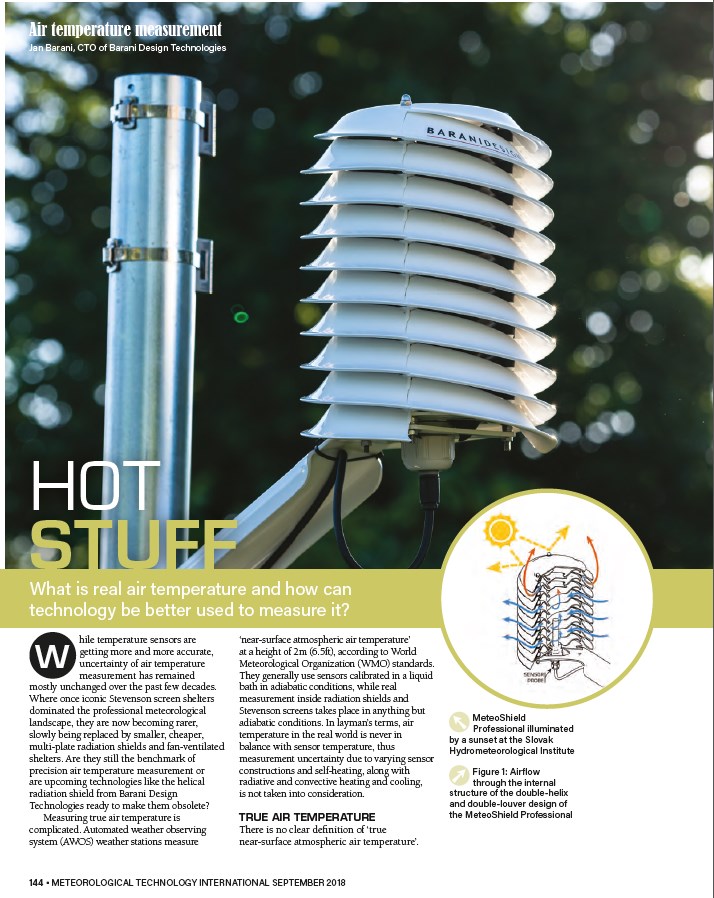Monsanto in Europe begins evaluation testing of MeteoHelix® IoT Pro in field experiments as part of SkyMaps’ agro solutions
/MeteoHelix® Pro weather station in agricultural field experiments
MeteoHelix® IoT Pro micro weather stations designed to achieve strict accuracies as set by the World Meteorological Organization (WMO) have been deployed to crop field experiments throughout Europe by Monsanto as part of Skymaps s .r .o. precision agricultural solution. The precise measurement properties resulting from their helical, spiral or twister design makes these wireless weather stations unique in the marketplace.
Recent advancements in wireless technologies enabled BARANI DESIGN Technologies to design a complete wireless weather station into a cavity where only a sensor could fit before. This new helical weather station design is not only accurate and compact, but also economical. With the target MSRP end-user price set at 499 Euro (VAT exclusive) or $550 USD, the measurement quality and installation convenience offered can be considered a steal. For precision agriculture experiments where accurate climate monitoring is of utmost importance, the long-term measurement stability offered by the self-cleaning MeteoHelix® IoT weather stations is a strong selling point, along with their ease of use, installation and operation.
The MeteoHelix® IoT Pro is not the only meteorological measurement technology being evaluated by Monsanto. Understory weather stations have been in evaluation for some time. MeteoHelix® IoT Pro is however the most accurate, theft proof, vandalism proof weather station on the market today.





